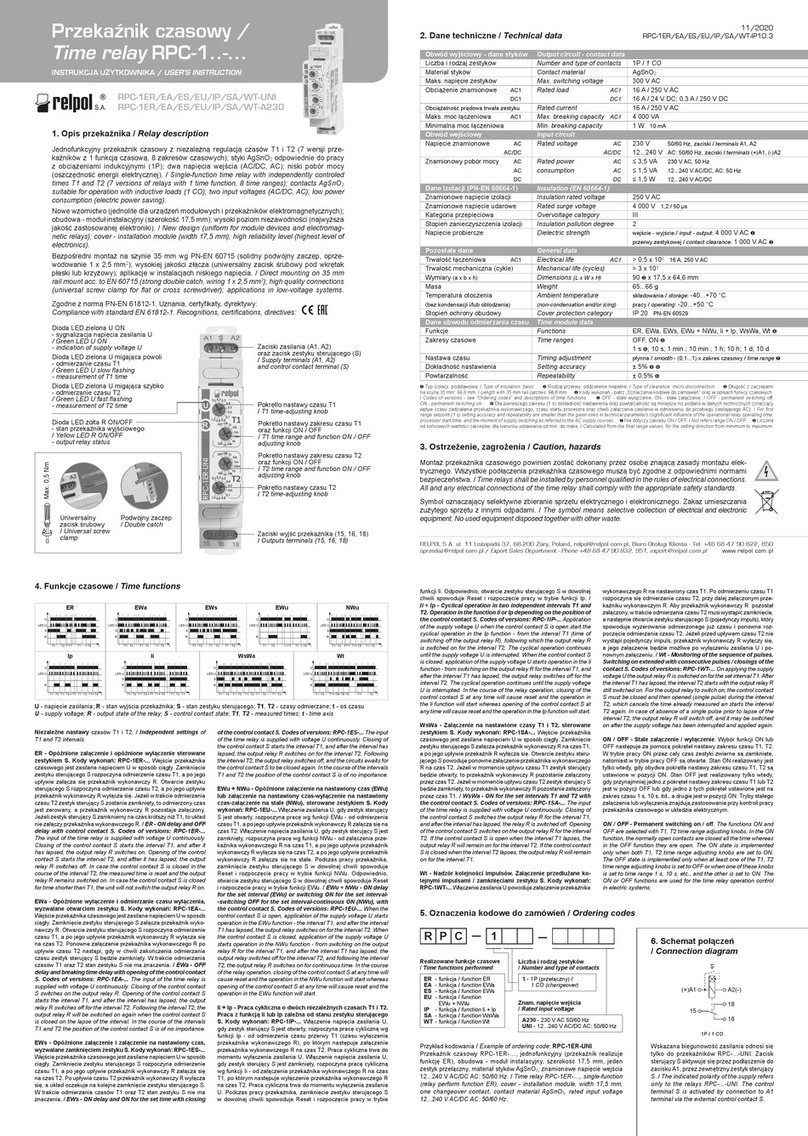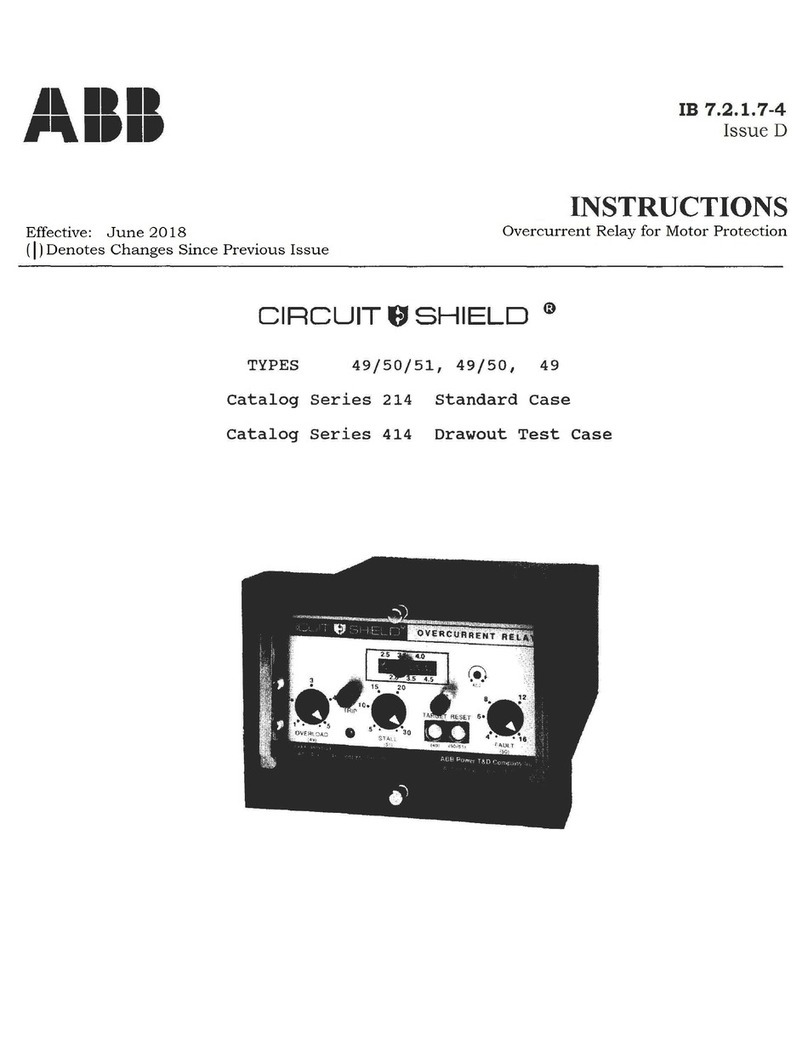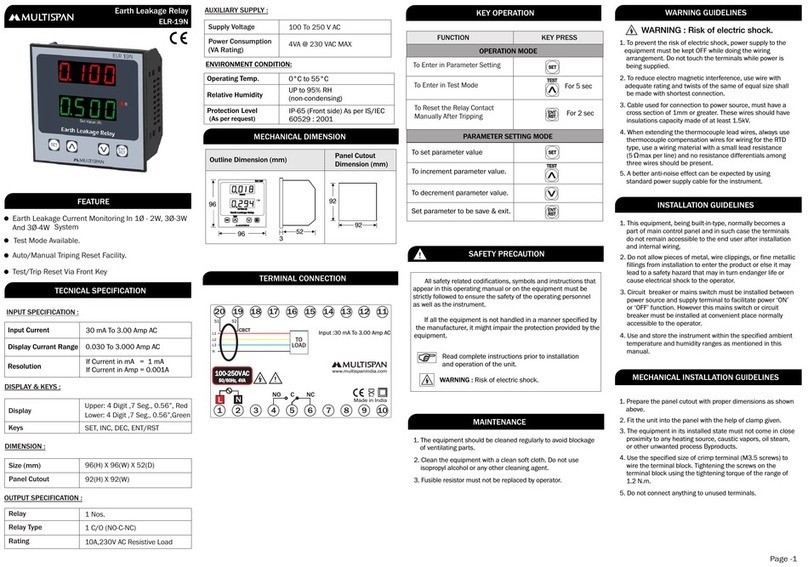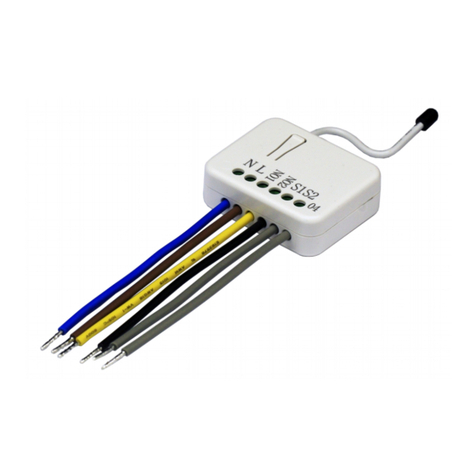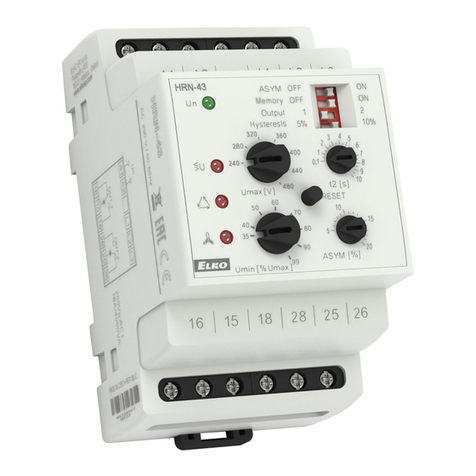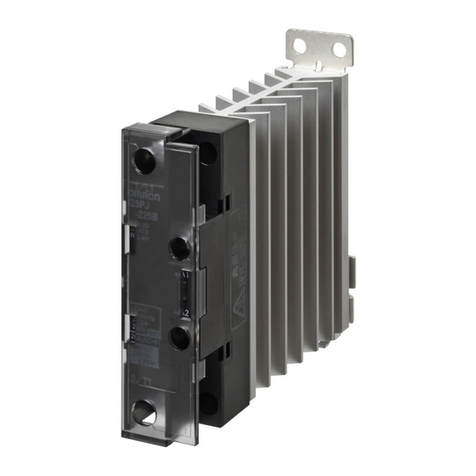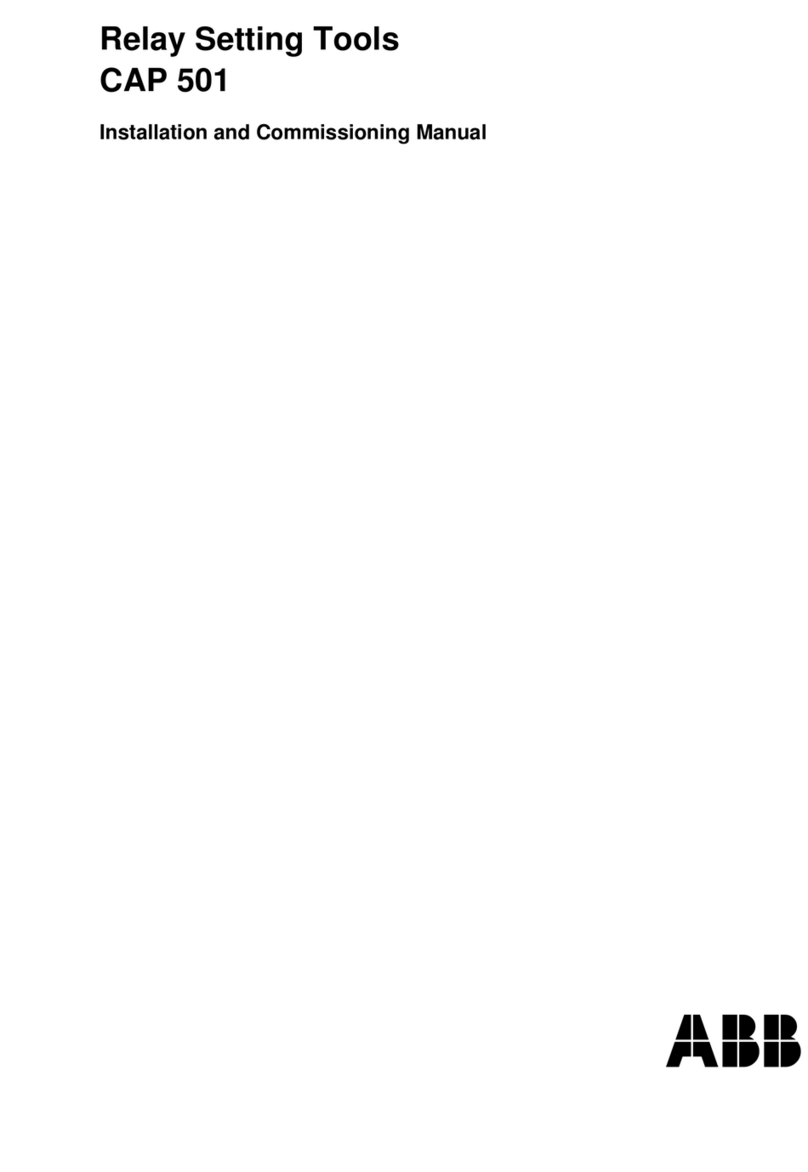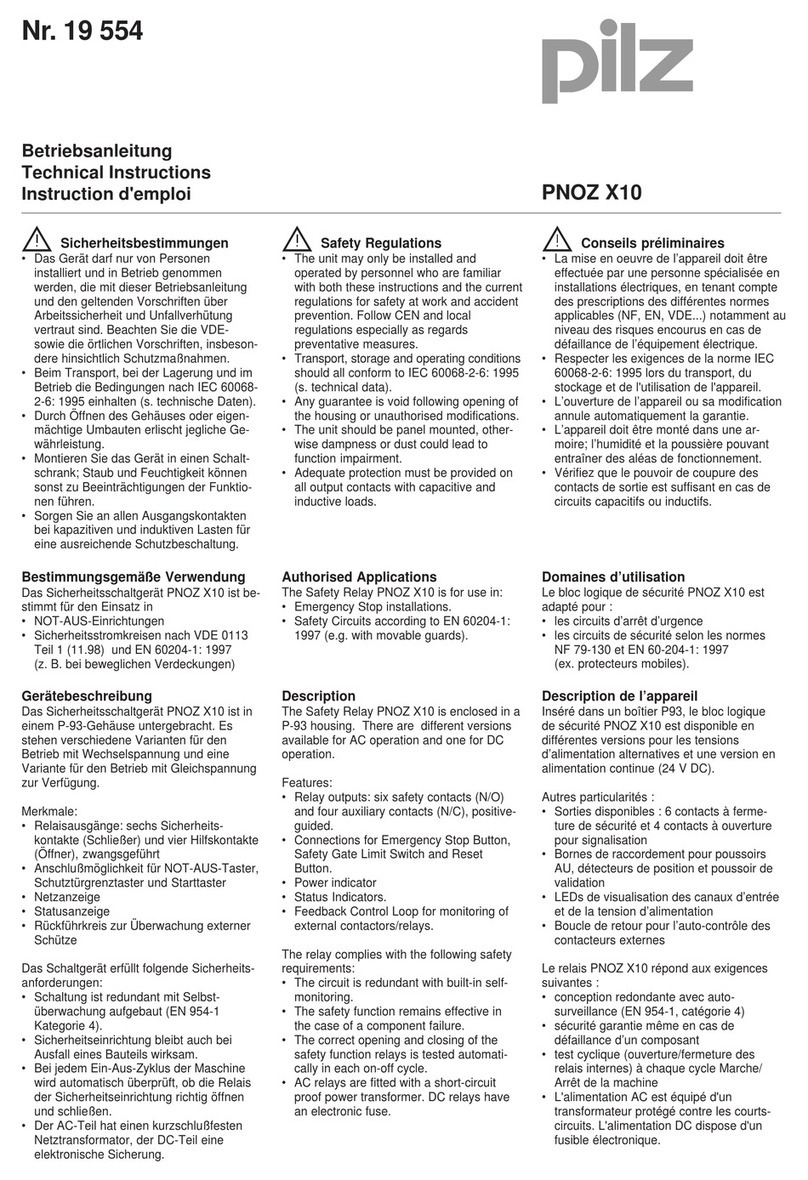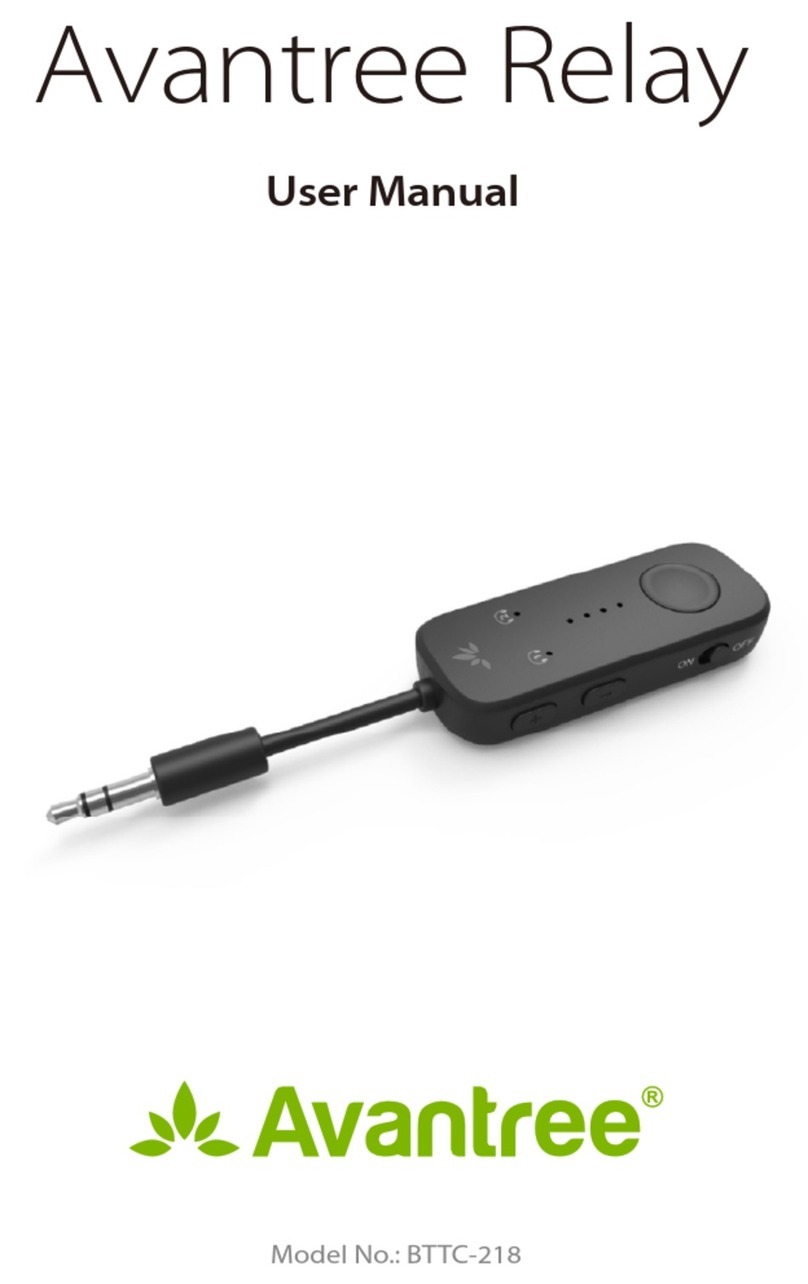Kohler RDT ATS User manual

TT-1646 6/15
INSTALLATION INSTRUCTIONS
Original Issue Date: 6/15
Model: RDT and RXT ATS with Load Management
Market: Residential/Commercial ATS
Subject: Power Relay Module Kit GM92001-KP1-QS
Introduction
The power relay module kit contains one 50 amp relay
with connecting lugs in a NEMA type 3R enclosure. Use
up to four power relay module kits with the following load
management devices:
DRDT automatic transfer switch with load shed kit
GM88281-KA1 or GM88281-KP1-QS
DRXT automatic transfer switch with load shed kit
GM88281-KA1 or GM88281-KP1-QS
DRXT automatic transfer switch with combined
interface/load management board
Note: A load shed kit or RXT combined interface/load
management board is required for load
management. See TT-1609 for the load shed kit
or TP-6807, RXT Operation and Installation
Manual, for load management operation
information.
The power relay modules can be mounted indoors or
outdoors. Mount the modules on a sturdy vertical
surface with the drain holes at the bottom of the module.
Two (2) 120 VAC loads (shed simultaneously) or a
single 240 VAC load can be wired to each relay.
An adequate electrical supply is required for operation
of the power relay module. The 120 VAC relays require
a customer-supplied voltage source. Check the
electrical requirements of the customer-provided
equipment prior to installation to determine the wire size
and circuit protection required. Verify that
customer-provided equipment complies with applicable
local and national electrical codes.
Read the entire installation procedure and compare the
kit parts with the parts list at the end of this publication
before beginning installation. Perform the steps in the
order shown.
See Figure 1 for an illustration of the power relay
module.
Equipment Required
DTwo to four #8 screws to mount each module
DDrill with 7/8 inch and/or 1 3/8 inch bits or hole saws
DLevel
DPower cable for relay source and load connections
(see Specifications below)
DControl cable for relay coil connection (see
Specifications below)
DConduit
dIf the modules are mounted outside, use outdoor-
rated conduit hubs .
dIf metal conduit is used, use conduit hubs with
screw terminals for the ground connection.
Figure 1 Power Relay Module
Specifications
Relay Rating 50 A @ 240 VAC
Operating Temperature --20 to 55_C
(--4 to 131_F)
Storage Temperature --40 to 85_C
(--40to185_F)
Relay Type DPST -- NC
Coil Voltage 120 VAC
Control Relay Output
Connection (to relay coil)
#6--32 screw
12--18 AWG cable
(ring terminals included)
Connecting Lug Wire Size
(qty. 4, relay source and load
connections)
#4--14 AWG
(Copper only)
Figure 2 Specifications

2TT-1646 6/15
Safety Precautions
Observe the following safety precautions while installing
the kit.
Accidental starting.
Can cause severe injury or death.
Disconnect the battery cables before
working on the generator set.
Remove the negative (--) lead first
when disconnecting the battery.
Reconnect the negative (--) lead last
when reconnecting the battery.
WARNING
Disabling the generator set. Accidental starting can
cause severe injury or death. Before working on the
generator set or connected equipment, disable the generator
set as follows: (1) Move the generator set master switch to the
OFF position. (2) Disconnect the power to the battery charger.
(3) Remove the battery cables, negative (--) lead first.
Reconnect the negative (--) lead last when reconnecting the
battery. Follow these precautions to prevent starting of the
generator set by an automatic transfer switch, remote
start/stop switch, or engine start command from a remote
computer.
Hazardous voltage.
Will cause severe injury or death.
Disconnect all power sources before
opening the enclosure.
DANGER
Short circuits. Hazardous voltage/current can cause
severe injury or death. Short circuits can cause bodily injury
and/or equipment damage.Do not contact electrical
connections with tools or jewelry while making adjustments or
repairs. Remove all jewelry before servicing the equipment.
1 Installation Procedure
Note: Load management priorities are determined by
the relay connections to the load shed kit or
interface/load management board. See TT-1609
for the load shed kit or TP-6807, RXT Operation
and Installation Manual, for load priority and load
management operation information.
1.1 Prevent the generator set from
starting.
1. Place the generator set master switch in the OFF
position.
2. Disconnect the utility power to the generator set.
3. Disconnect the generator set engine starting
battery(ies), negative (--) lead first.
1.2 Install the power relay modules.
1. Identify a convenient location near the transfer
switch or the load. The module will be connected to
the load shed kit or the transfer switch’s combined
interface/load management board and to the
non-essential circuits that can be added or shed by
the load management system.
2. Remove the cover from the module.
3. Cover or remove the relay from the box to protect it
from debris.
4. Use a drill or hole saw to cut openings for the cables
into and out of the box. 7/8 inch and 1 3/8 inch
openings for 1/2 inch and 1 inch conduit hubs are
marked on the box in recommended locations.
5. Use a screwdriver to knock out the mounting holes
in the bottom of the box. Knock out only the holes
that will be used to mount the box.
6. Be sure to install the box with the drain holes
pointing down. Use a minimum of two mounting
screws at opposite corners of the box. Using the
dimensions shown in Figure 7 or using the bottom
of the box as a template, mark and drill two or four
pilot holes or mounting holes for #8 screws as
needed in the mounting surface.
Note: Be sure to install the box with the drain holes
pointing down.
7. Remove debris from the box and reinstall the relay,
if it was removed. Tighten the relay mounting
screws to 2.3 Nm (20 in-lbs).
8. Use two or four #8 screws to mount the box
securely with the drain holes pointing down.

TT-1646 6/15 3
1.3 Relay Connections to a Load Shed Kit
This section applies to models RDT ATS and RXT ATS
equipped with load shed kit GM88281-KA1 or
GM88281-KP1-QS. For the RXT with combined
interface/load management board, go to Section 1.4.
See Figure 2 for cable specifications.
Note: See the instructions provided with the load shed
kit for load priority and load management
operation information.
Load management priorities are determined by the
control relay output connections to the load shed kit.
Typically, Load A is added first and shed last.
1. Disconnect power to the transfer switch.
2. If the load shed kit is not already installed, follow the
instructions provided with the load shed kit to install
the load shed kit into the transfer switch enclosure
and connect it to the generator set controller and
current transformer.
3. Connect customer-supplied leads to the control
relay output terminals on the load shed kit terminal
block. See Figure 3 and Figure 4.
4. See Figure 7 for the coil connection screws on the
relay. Connect the control leads from the load shed
kit to the relay coil using ring terminals X-283-2.
5. See Figure 4 and Figure 8 for the source and load
connections to the relay.
a. Connect the line side of the relay to the source
power circuit as shown in Figure 4.
b. Connect the load side of the relay to the
non-essential load circuits as shown in
Figure 4. Two (2) 120 VAC loads (shed
simultaneously) or a single 240 VAC load can
be wired to each relay.
6. Connect the 120 VAC power circuit to the the load
shed kit terminal block as shown in Figure 4.
Note: The AC power supply circuit must be
protected by an appropriately sized fuse or
circuit breaker.
7. For all other load shed kit installation and
connection instructions, see the installation
instructions provided with the load shed kit.
8. Go to Section 1.5.
Relay * Load Shed Kit TB10 Connection
Load A TB10-1 and TB10-2
Load B TB10-3 and TB10-4
Load C TB10-5 and TB10-6
Load D TB10-7 and TB10-8
* Load add/shed priority is based on the order of connection to
the terminal block.
Figure 3 Relay Coil Control Connections to Load
Shed Kit
GM88804
LOAD SHED KIT
TERMINAL BLOCK
FACTORY CONNECTIONS
RBUS
CONNECTIONS
Figure 4 Relay Connections to Load Shed Kit

4TT-1646 6/15
1.4 Relay Connections to an RXT
Combined Interface/Load
Management Board
This section applies to the RXT ATS equipped with the
combined interface/load management board. For
models RDT ATS and RXT ATS equipped with the load
shed kit, go to Section 1.3.
See Figure 2 for cable specifications.
Note: See the RXT Operation and Installation Manual
for load priority and load management operation
information.
Load management priorities are determined by the
control relay output connections to the RXT
interface/load management board. Typically, Load A is
added first and shed last.
1. Disconnect power to the transfer switch.
2. If the combined interface/load management board
is not already connected to the generator set,
follow the instructions in TP-6807, RXT ATS
Operation and Installation Manual, to connect the
interface board to the generator set controller and
current transformer.
3. Connect customer-supplied leads to the control
relay output terminals on the combined
interface/load management board. See Figure 5
and Figure 6.
4. See Figure 7 for the coil connection screws on the
relay. Connect the control leads from the RXT
combined interface/load management board to the
relay coil using ring terminals X-283-2.
5. See Figure 6 and Figure 8 for source and load
connection points on the relay.
a. Connect the line side of the relay to the source
power circuit as shown in Figure 6.
b. Connect the load side of the relay to the
non-essential load circuits as shown in
Figure 6.
6. Connect 120 VAC power to connections AC1 and N
on interface board connection TB2 as shown in
Figure 6.
Note: The AC power supply circuit must be
protected by an appropriately sized fuse or
circuit breaker.
7. Connect the load side of the relay to the
non-essential load circuits. Two (2) 120 VAC loads
(shed simultaneously) or a single 240 VAC load
can be wired to each relay.
8. For all other load control connection instructions,
see the Operation/Installation Manual provided
with the RXT automatic transfer switch.
9. Proceed to Section 1.5.
Relay * Interface Board TB2 Connection
Load A A and N
Load B B and N
Load C C and N
Load D D and N
* Load add/shed priority is based on the order of connection to
the interface board.
Figure 5 Relay Coil Control Connections to RXT
Combined Interface/Load Management
Board
GM95546
Figure 6 Relay Connections to RXT Combined Interface/Load Management Board

TT-1646 6/15 5
1.5 Ground the box.
Note: The power relay module uses a non-conductive
resin enclosure. Bonding between conduit
connections is not automatic and must be
provided as part of the installation.
1. Connect ground leads to the 1/4-20 post near the
bottom of the box using nut X-81-8. See Figure 7.
If metal conduit is used, use conduit hubs with
screw terminals for the ground connection.
Connect the ground leads LK-1006-1515, supplied
with the kit, to the grounding post. Connect the
other ends of the ground leads to the conduit hub
screw terminals.
2. Ground the system according to the NEC and
applicable state and local codes.
1.6 Install the module cover.
1. Check that gasket GM92009 is in place in the
groove around the edge of the box, with a gap at the
bottom as shown in Figure 7.
2. Place the cover on the box and reinstall the four
cover screws.
1.7 Return the system to automatic
operation.
1. Check that the generator set is OFF.
2. Reconnect the generator set engine starting
battery, negative (--) lead last.
3. Reconnect utility power to the generator set.
4. Press the AUTO button on the generator set
controller.
5. Reconnect power to the transfer switch.
2 Operation
The power relay module operation is controlled by the
load management device, which is either a load shed kit
or the RXT combined interface/load management
board. The relay is normally closed so that the
connected load is powered when the normal source is
available.
When the transfer switch is in the emergency source
position and power is supplied by the generator set, the
load management device signals the relay to open or
close. When the relay is open, the load is not powered.
When the relay closes, the load is powered by the
generator set. The loads are prioritized according to the
relay connections to the load management device. See
TT-1609 for the load shed kit or TP-6807, RXT ATS
Operation/Installation Manual, for information about
operation of the load management device.
Note: The power relay modules are not RBUS
modules.
3 Dimension Drawings
The dimension drawings for the power relay module are
shown in Figure 7 and Figure 8.

6TT-1646 6/15
Figure 7 Power Relay Module Dimensions, ADV-8742, Sheet 1 of 2

TT-1646 6/15 7
Figure 8 Power Relay Module Dimensions, ADV-8742, Sheet 2 of 2

8TT-1646 6/15
KOHLER CO., Kohler, Wisconsin 53044 USA
Phone 920-457-4441, Fax 920-459-1646
For the nearest sales and service outlet in the
US and Canada, phone 1-800-544-2444
KOHLERPower.com
Kohler Power Systems
Asia Pacific Headquarters
7 Jurong Pier Road
Singapore 619159
Phone (65) 6264-6422, Fax (65) 6264-6455
4 Parts Lists
Power Relay Module Kit
Kit: GM92001-KP1-QS
Qty. Description Part Number
1Decal, Nameplate GM92008
1Enclosure, Base GM91999
1Enclosure, Cover GM92000
2Screw, Thread Forming GM92003
1Gasket (2.56 ft.) GM92009
1Relay, Sub Assy GM92005
1Decal GM97546
2Terminal, ring, male, 16-14 AWG X-283-2
2Lead LK-1006-1515
4Screw, Phillips pan head,
thread-form
X-6071-2
1Nut, hex, 1/4-20 X-81-8
1Installation Instructions TT-1646
A
vailability is subject to change without notice. Kohler Co. reserves the
right to change the design or specifications without notice and without any
obligation or liability whatsoever. Contact your local Kohlerrgenerator
set distributor for availability.
2015 by Kohler Co. All rights reserved.
This manual suits for next models
1
Table of contents


